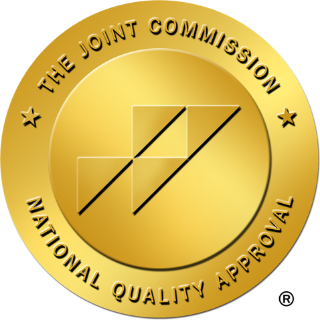Making the decision to stop drinking is an important first step toward reclaiming your health and well-being. But if you’ve been drinking regularly or heavily, you may experience alcohol withdrawal symptoms when you reduce or quit alcohol. These symptoms can be uncomfortable, even dangerous, if not handled properly. That’s why knowing how to manage withdrawal safely is essential for anyone beginning the journey to sobriety.
This guide will help you understand what to expect during withdrawal, how to manage symptoms safely, and when to seek professional support.
What Are Alcohol Withdrawal Symptoms?
Alcohol withdrawal symptoms occur when someone who has developed a physical dependence on alcohol suddenly stops drinking or significantly reduces their intake. This dependence builds over time as the brain adjusts to the consistent presence of alcohol, which acts as a depressant by slowing down brain activity and altering neurotransmitter function. When alcohol use is abruptly discontinued, the brain—which has been compensating for alcohol’s sedative effects—becomes overstimulated. This overactivity of the central nervous system is what causes withdrawal symptoms.
These symptoms can range widely in severity depending on factors like how long and how heavily the person has been drinking, their overall health, and whether they’ve experienced withdrawal before. For some, symptoms may be mild and manageable; for others, they can be intense, painful, and even life-threatening. Typically, withdrawal begins within 6 to 12 hours after the last drink, peaks within 24 to 72 hours, and can last several days.
Common alcohol withdrawal symptoms include:
- Sweating and shakiness – Often one of the first signs to appear, excessive sweating and tremors occur as the nervous system becomes hyperactive.
- Nausea or vomiting – The digestive system reacts to sudden alcohol cessation with stomach discomfort, which can lead to dehydration if not properly managed.
- Headache – Due to dehydration, poor sleep, and stress on the body, headaches are a frequent early symptom.
- Anxiety or irritability – Emotional and psychological symptoms are common, as alcohol withdrawal can heighten feelings of nervousness, panic, and restlessness.
- Insomnia – Difficulty falling or staying asleep is a hallmark symptom, even in those who previously used alcohol to induce sleep.
- Increased heart rate – A racing or irregular heartbeat may occur due to heightened stress hormones and sympathetic nervous system activation.
- Hallucinations – Some individuals experience visual, auditory, or tactile hallucinations, often starting within the first 24 hours and lasting a few days.
- Seizures – In moderate to severe cases, especially without medical supervision, seizures may occur within 6–48 hours after stopping alcohol.
- Delirium tremens (DTs) – This is the most serious form of alcohol withdrawal, typically emerging 48 to 72 hours after the last drink. Symptoms include severe confusion, agitation, fever, hallucinations, and cardiovascular instability. DTs are a medical emergency and require immediate hospitalization.
Understanding these symptoms is critical when planning to detox from alcohol. If you or someone you care about is considering quitting alcohol, it’s important to know what to expect and to seek professional guidance to ensure a safe and supportive recovery process.
Why Safety Matters During Withdrawal
Alcohol withdrawal is a medically significant condition that can quickly escalate in severity if not properly monitored. While many people may expect only mild discomfort when quitting alcohol, the truth is that withdrawal can trigger serious complications, especially for those who have been drinking heavily or over a long period of time. The body and brain become dependent on alcohol to function, and when it’s suddenly removed, the central nervous system reacts by going into overdrive.
This overstimulation can lead to a range of symptoms, including tremors, anxiety, nausea, and in more severe cases, hallucinations, seizures, and delirium tremens (DTs). DTs, in particular, are considered a medical emergency and can be fatal without immediate treatment. The unpredictability of withdrawal symptoms makes it dangerous to detox without professional oversight.
Because of these potential risks, prioritizing safety during withdrawal is absolutely essential. Individuals should never attempt to quit alcohol “cold turkey” without first assessing their risk level or speaking with a healthcare provider. Withdrawal symptoms can begin as early as six hours after the last drink and may worsen rapidly. If someone is detoxing at home without medical supervision, they may not recognize the warning signs of severe complications until it’s too late.
In a medically supervised detox setting, however, trained professionals are available 24/7 to monitor vital signs, manage symptoms with medication, and respond quickly to any health emergencies. This level of care significantly reduces the risk of complications and is a key part of understanding how to safely manage alcohol withdrawal symptoms.
Whether you’re considering quitting on your own or supporting a loved one through detox, having a clear understanding of the risks involved can help you make informed decisions. Choosing the right environment and support system can be the difference between a successful recovery and a dangerous medical crisis. Safe withdrawal isn’t just about surviving the initial symptoms—it’s about creating the best possible conditions for long-term healing.
By consulting with addiction specialists, enrolling in a professional detox program, or working with a medical provider, individuals can take the first step toward recovery in a way that protects both their physical and mental well-being. No matter your situation, knowing how to safely manage alcohol withdrawal symptoms is essential to beginning a recovery journey with confidence and care.
Step 1: Assess Your Risk Level
Before beginning the detox process, it’s important to determine whether it’s safe to do it at home or if you need medical supervision.
You should seek medical help if you:
- Drink large amounts of alcohol daily
- Have been drinking heavily for more than a few months
- Have underlying health conditions (like heart disease or liver issues)
- Have a history of seizures or mental health disorders
If any of these apply, a medically supervised detox is strongly recommended.
Step 2: Consider Medical Detox
Medical detox is the safest option for anyone at risk of severe alcohol withdrawal symptoms. In a detox facility, you’ll receive:
- 24/7 medical supervision
- Medication to manage symptoms (like benzodiazepines to prevent seizures)
- Fluids and nutrients to help your body stabilize
- Emotional support from professionals
Detox can take anywhere from a few days to a week, depending on your level of dependence.
Step 3: Create a Safe Environment at Home
If your symptoms are expected to be mild and you’re detoxing at home under medical advice, it’s important to create a safe, supportive space. Here’s how to prepare:
- Have a trusted support person stay with you for at least the first few days
- Remove all alcohol from the home
- Stock up on easy-to-digest, nutritious foods and water
- Clear your schedule for a few days so you can rest
- Know the warning signs of severe symptoms and when to call 911
Step 4: Stay Hydrated and Nourished
Alcohol is a diuretic and can leave your body dehydrated and low on essential nutrients. During withdrawal, focus on:
- Drinking plenty of water
- Consuming electrolyte-rich beverages (like sports drinks or oral rehydration solutions)
- Eating small, frequent meals with whole grains, fruits, lean protein, and vegetables
- Avoiding caffeine, which can worsen anxiety and disrupt sleep
Step 5: Use Comfort Measures to Ease Symptoms
While some withdrawal symptoms may be inevitable, there are ways to ease your discomfort naturally:
- Take cool showers or use damp cloths to reduce sweating
- Practice deep breathing or meditation to calm anxiety
- Listen to calming music or audiobooks to distract your mind
- Keep your space dark and quiet to reduce agitation or sensitivity
Step 6: Know When to Seek Emergency Help
Even if you start with mild symptoms, they can quickly escalate. Call emergency services or visit the nearest hospital if you or a loved one experiences:
- Seizures
- Hallucinations
- Confusion or disorientation
- High fever
- Rapid heart rate
- Trouble breathing
These signs may indicate delirium tremens (DTs), a medical emergency.
Step 7: Explore Medication Options
If you’re under a doctor’s care, medications may be prescribed to help reduce withdrawal severity. These may include:
- Benzodiazepines: Help prevent seizures and calm the nervous system
- Anticonvulsants: May be used for seizure prevention in some cases
- Antipsychotics: Can help manage hallucinations or agitation
- Sleep aids or anti-nausea medications: Offer relief for specific symptoms
Never take medications for withdrawal without medical supervision, as improper use can be dangerous.
Step 8: Prepare for the Emotional Side of Withdrawal
Withdrawal isn’t just physical—it also takes a toll on your mental health. Depression, anxiety, irritability, and mood swings are common during the early stages of recovery.
Consider:
- Talking to a therapist or counselor who specializes in addiction
- Joining a support group like Alcoholics Anonymous (AA) or SMART Recovery
- Asking friends or family for emotional support during this time
Mental health support is just as important as physical care during alcohol withdrawal.
Step 9: Transition Into Long-Term Treatment
Detox is a critical starting point, but it is only the beginning of the recovery journey. While detox helps you safely manage alcohol withdrawal symptoms and stabilize physically, true and lasting recovery from alcohol use disorder requires continued care that addresses the emotional, behavioral, and psychological aspects of addiction. Without follow-up treatment, individuals are significantly more likely to relapse—even after successfully completing detox. That’s why transitioning into a structured, evidence-based treatment program is the most important next step.
There are several options to consider depending on your unique needs, lifestyle, and level of support. Inpatient rehab provides an immersive, structured environment where clients participate in daily therapy, support groups, and recovery activities while living onsite. Outpatient programs, on the other hand, allow for greater flexibility by enabling individuals to receive therapy and support while living at home—ideal for those with stable living environments or work commitments. Individual and group counseling help uncover the root causes of addiction, teach coping skills, and build emotional resilience. Medication-assisted treatment (MAT) may also be offered, combining therapy with FDA-approved medications that reduce cravings and support long-term sobriety.
Following detox, it’s vital to recognize that alcohol withdrawal symptoms are only one part of a much larger picture. Recovery is about more than just getting through the initial discomfort—it’s about building a sustainable, alcohol-free lifestyle grounded in self-awareness, support, and holistic care. By committing to long-term treatment, whether through inpatient rehab, outpatient therapy, or MAT, you lay the groundwork for real transformation. Taking this next step ensures that you’re not just surviving alcohol withdrawal, but actively creating a future rooted in health, purpose, and recovery.
Step 10: Focus on Recovery and Self-Care
After alcohol withdrawal, your body and mind require time, patience, and care to fully recover. The detox process may have cleared alcohol from your system, but the path to lasting sobriety continues with daily self-care and intentional recovery work. Healing doesn’t happen overnight—it’s a long-term journey that demands both structure and compassion. That’s why it’s important to develop a recovery routine that nurtures both physical and emotional well-being.
To maintain progress and avoid relapse, continue prioritizing foundational health habits. This includes getting quality sleep every night, as rest is essential for emotional regulation and cognitive clarity. Fuel your body with balanced nutrition—whole grains, lean proteins, fruits, and vegetables—to restore depleted nutrients and stabilize your mood. Incorporate regular exercise into your routine, even if it’s just light walking or stretching. Physical activity improves mood, reduces anxiety, and promotes brain healing. Surround yourself with a support network of friends, family, or peers in recovery, and keep up with routine appointments with healthcare providers or therapists who understand your recovery goals.
Managing alcohol withdrawal symptoms is only the first step in achieving long-term recovery, but what comes afterward is just as important. The emotional ups and downs, cravings, and lifestyle adjustments that follow detox can be just as challenging as the initial withdrawal phase. That’s why maintaining a self-care regimen—and seeking support when needed—is essential for continued success. If you’ve made it through detox, celebrate that milestone, but know that recovery is an ongoing commitment. Stay connected to recovery resources, prioritize your mental and physical health, and remember that each sober day strengthens your resilience. Recovery is not just about staying away from alcohol—it’s about building a healthier, more fulfilling life beyond it.
How to Safely Manage Alcohol Withdrawal Symptoms

Alcohol withdrawal symptoms can be intense, frightening, and at times, dangerous—but you don’t have to face them alone. Understanding what to expect, recognizing when symptoms require medical attention, and having a plan in place can dramatically improve your safety and outcomes. Whether you’re experiencing withdrawal for the first time or have gone through it before, knowing the signs and being prepared can make a life-saving difference. The more informed and supported you are, the smoother your transition into recovery will be.
Both medical and emotional support play a crucial role in navigating withdrawal safely. Detox is just the beginning of the recovery process, and it should be handled with care. A medically supervised detox program ensures that your body is monitored around the clock and that any complications are addressed quickly. But beyond the physical symptoms, it’s also important to consider the emotional toll of withdrawal. Depression, anxiety, and mood swings are common—and without proper support, they can derail your progress. That’s why professional guidance from addiction specialists, therapists, and recovery-focused programs is invaluable during this time.
If you or a loved one is struggling with alcohol dependence, don’t wait until it becomes a crisis. Early intervention can prevent serious complications and lead to a stronger, more sustainable recovery. At Pacific Breeze Recovery, we understand the challenges of alcohol withdrawal and offer compassionate, medically supported care every step of the way. Our team specializes in personalized detox and rehabilitation services designed to treat not just the symptoms, but the whole person. Message us today to learn how we can support you through safe detox and long-term recovery. Help is here—and healing starts with a single step.





